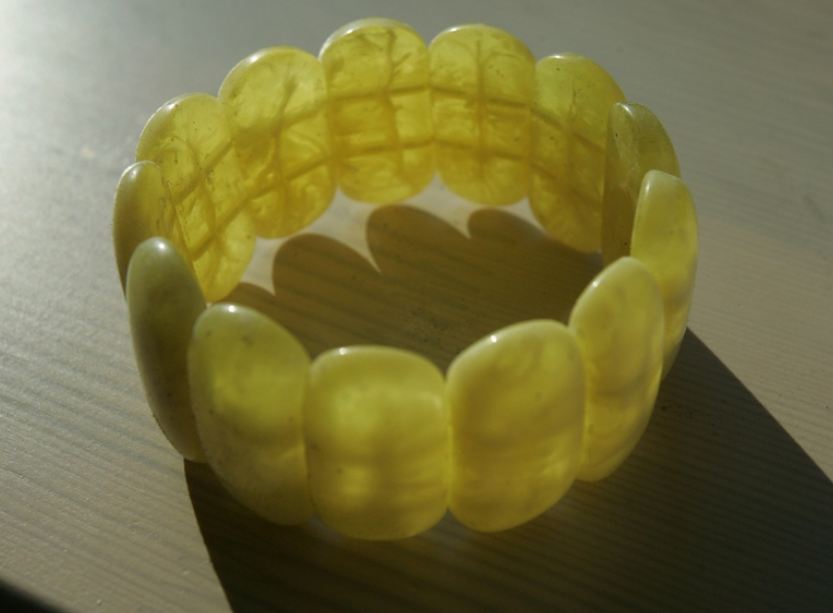| Main » Articles » About Baltic Amber |
| -
"Only the amber, rubbed and warmed up by hands, attracting mustard seeds is considered to be real.” (Tao Chuncinas 452-536) In the middle of the 19th century scientists discovered ways to synthesize natural precious substances and Baltic amber fell a prey to falsification. Nowadays the falsification of amber (especially inclusions) is widespread. People who know only a few things about amber could be deceived. The falsifications could be sold as natural amber and sometimes for high price. This article will tell of the most popular amber falsifications and the ways to distinguish them from real amber. "Smell" tests Smell tests are the most effective because natural amber has a specific smell, which is difficult to obtain when producing falsifications. When heated real Baltic amber smell has specific delicate fragrance of pine-tree resins. Heated falsifications of copal have a smell of "sweet" resins and those using other materials smell like a burning plastic.
(The best way is to rub in the palm of the hand) It is possible to heat real amber by rubbing until it starts smelling like pine-tree resins. The test requires a very strong hand, as it is rather difficult to heat amber (especially when polished) to the necessary temperature, and it could be difficult to make an experiment with amber set in jewelry, as trying to rub it into other materials the amber could get scratched.
To stick a heated needle into an imperceptible place in the amber (a hole of a drilled bead, etc.). If you smell definite pine-tree resins it means it is real amber. Drawback of the test: the slight mark of burning remains-this is irreparable.
Salt-water test Specific gravity of amber (copal and polystyrene also) (1.05-1.096) is a little bit lower than of salt-water (1.15). Therefore, those materials will all float in salt-water, while others will sink. Pour 15 g of salt into 100 ml of water and stir. After several minutes of stirring the salt will dissolve. Carry out the test and wash the sample with pure water. Drawback of the test: it will not detect polystyrene and copal; and jewelry (with metal, strings of beads and clasps make the piece sink). To be finally convinced that floating material is amber, the "hot needle" test is indispensable. IR-spectroscopy IR-spectroscopy is the most effective scientific method to identify fossil resins. Baltic amber could be characterized by IR-spectrum segment called "Baltic amber shoulder". Fluorescencetest Under UV light the amber shows an intensive blue-white fluorescence. Ether or acetone test A drop of ether or acetone on natural amber is not harmful. Surface of a fake amber piece affected by ether or acetone becomes sticky. Reliable shops There are a lot of complicated methods how to distinguish natural amber, however, the safest way to purchase real amber is buying it at reliable shops. It‘s even better if the shop can provide with a certificate which testifies that you have bought real amber. MATERIALS MOST OFTEN USED FOR AMBER IMITATIONS: It is easy to distinguish glass from amber: it is more solid; it cannot be scratched by metal. Glass is cold and fireproof. Frequently, this material is found in artificial amber beads. These amber beads have especially precise shape (oval, faceted), the color is very similar to real amber (dark red, cloudy yellow, transparent). When heated it does not have a smell of pine-tree resins, which is characteristic for Baltic amber. Celluloid (cellulose nitrate) is usually yellow and cloudy. Optically it is difficult to distinguish it from amber. Celluloid is more solid and not so flammable. When heated it smells like a burning plastic. This is a plastic made from milk. The beads have cloudy, turbid yellow color. It is a little bit heavier than amber. When heated it smells like a burning plastic. Modern plastic (polyester, polystyrene) is used to produce artificial amber and inclusions. There is a workshop in Russia, where fake amber is produced. Although these falsifications are sold for a very low price with indication that it is not amber, later on they get into the market, where it is difficult to control them. It often happens that street vendors themselves do not always know that the product they sell is made of modern plastic. Optically this substitute can hardly be distinguished because authentic amber colors and transparency can be obtained. Like in copal, falsified inclusions are too big (more than 10 mm) and clearly seen, inserted in the very center of plastic. When heated it smells like a burning plastic. Copal is sold as Baltic amber, but in fact this is very young tree resins ( 1000- 1 million years old). Most of Copal is found in deltas of tropical rivers (East Africa, Madagascar, Colombia). Recent studies show that only Colombia and Madagascar copal is more than a few thousand years old. Natural inclusions are possible in Copal, but usually they are falsified. Insects are inserted in them that are too big and too good-looking. Copal melts at a rather low temperature (lower than 150 C), and tends to melt rather than burn. When heated it a "sweet" smell of burning resins. If you put ether or acetone on Copal, its surface becomes sticky. Copal is often called "young amber", which often confuses people.
| ||||||||||||||||||||
| Views: 2085 | Comments: 9 | Rating: 5.0/1 | ||||||||||||||||||||
| Total comments: 0 | |












